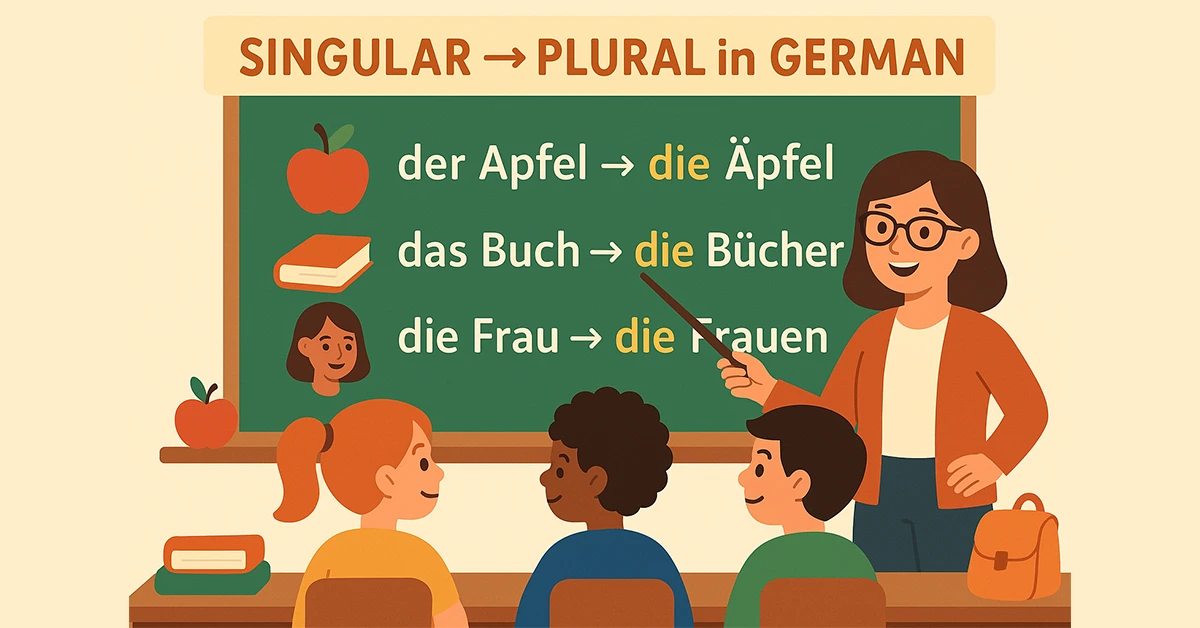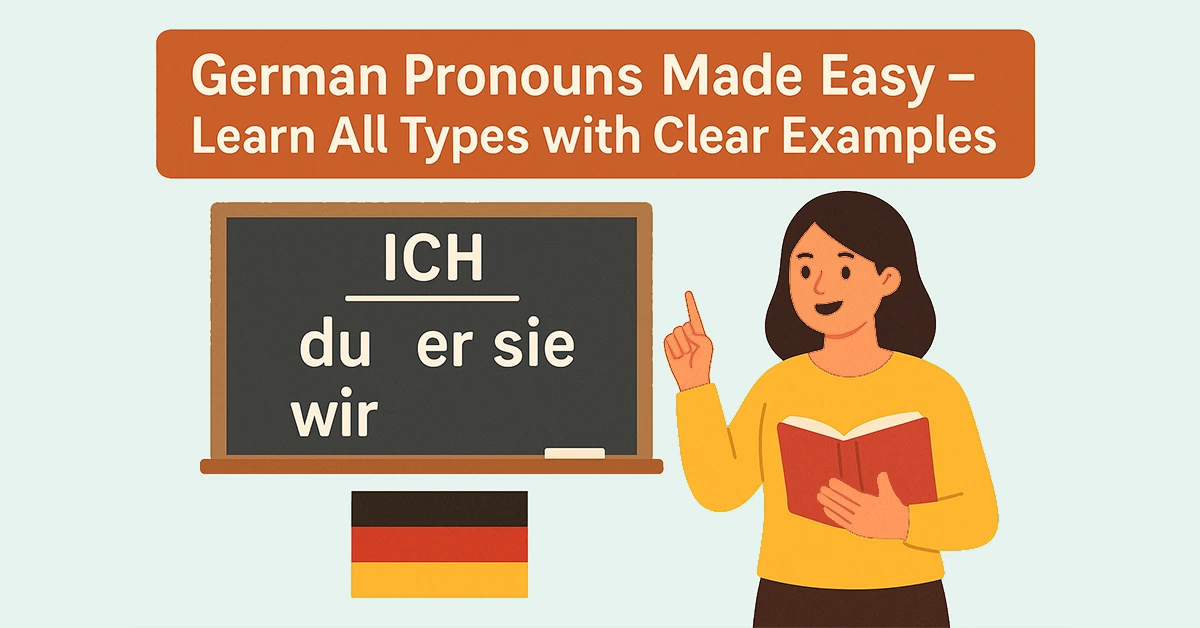Grammar Basics
-

German Plural Forms Explained – A1 Beginner’s Complete Guide
Learn German plural forms easily with this complete A1 beginner’s guide. Discover rules, patterns, examples, and quizzes to master German noun plurals step by step.
-

German Pronouns Made Easy – Learn All Types with Clear Examples
Learn all types of German pronouns with simple explanations and examples. This complete guide covers personal, reflexive, possessive, and more – perfect for beginners!